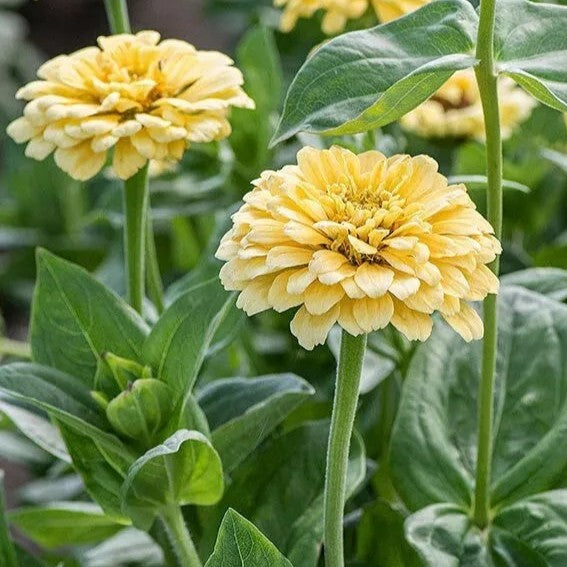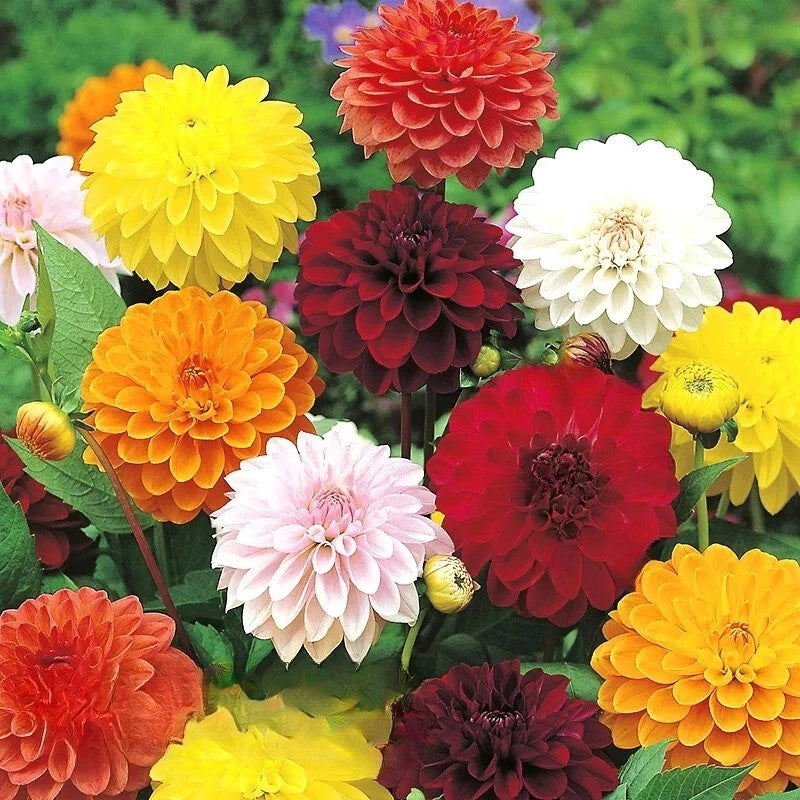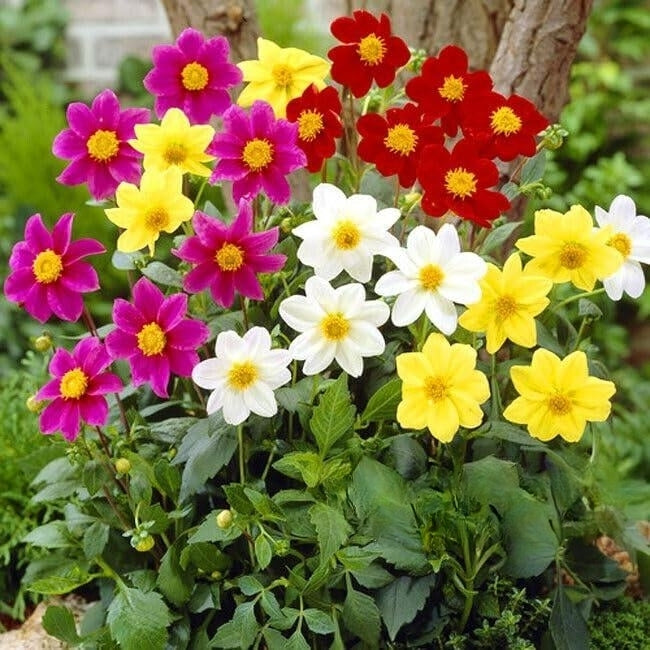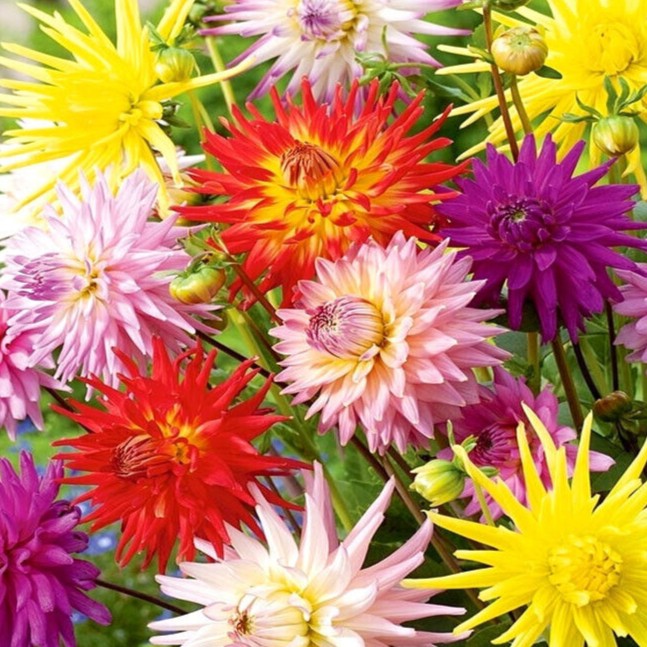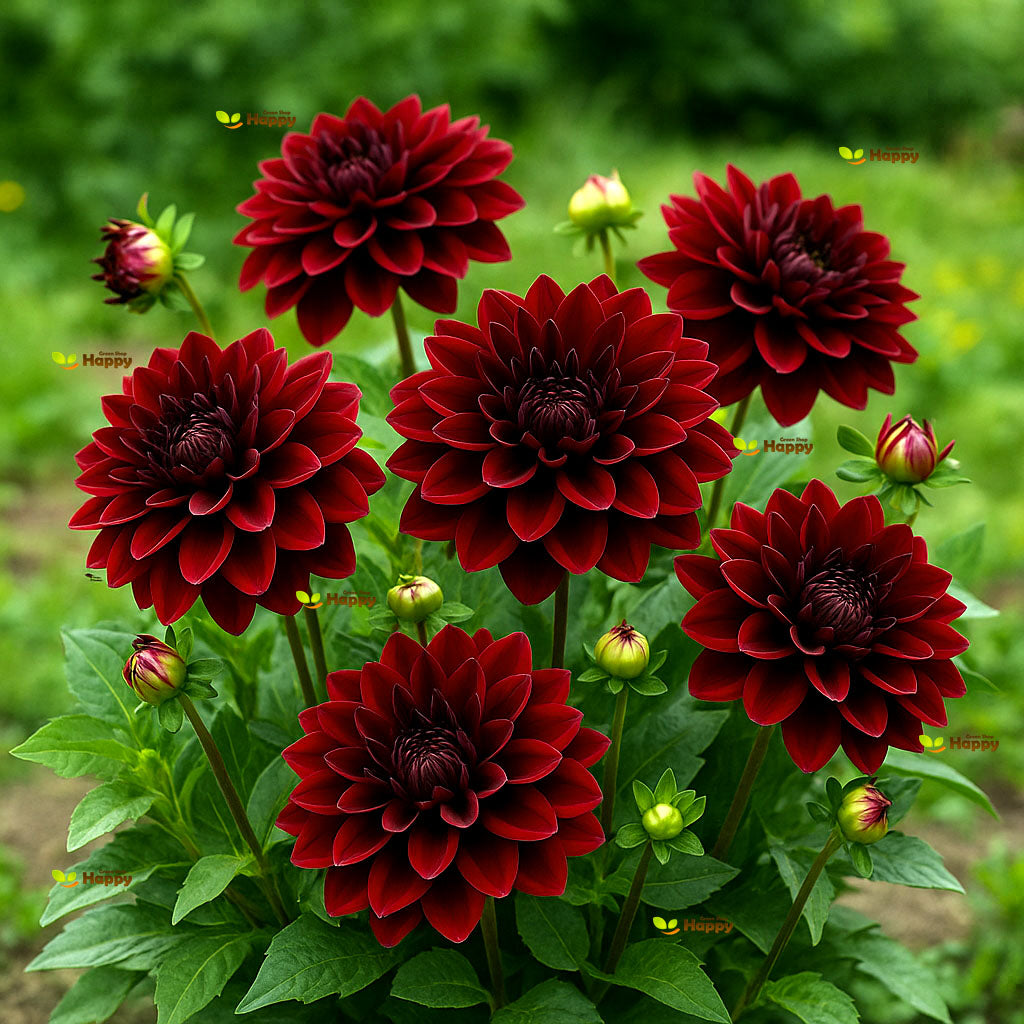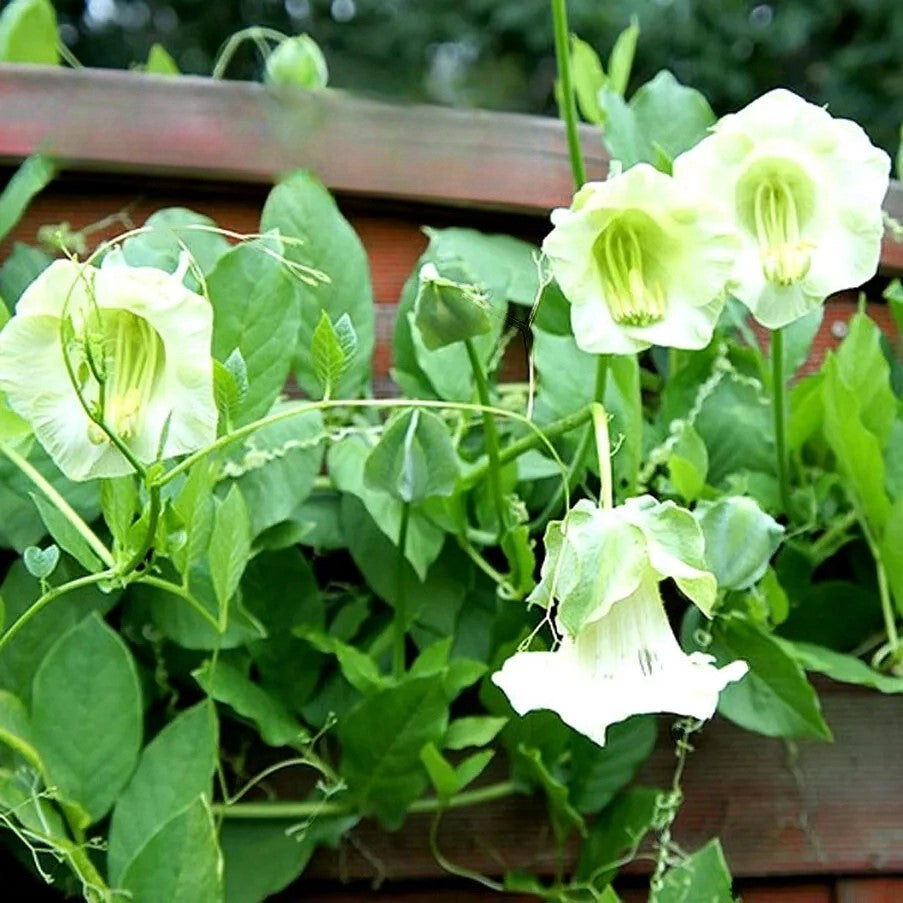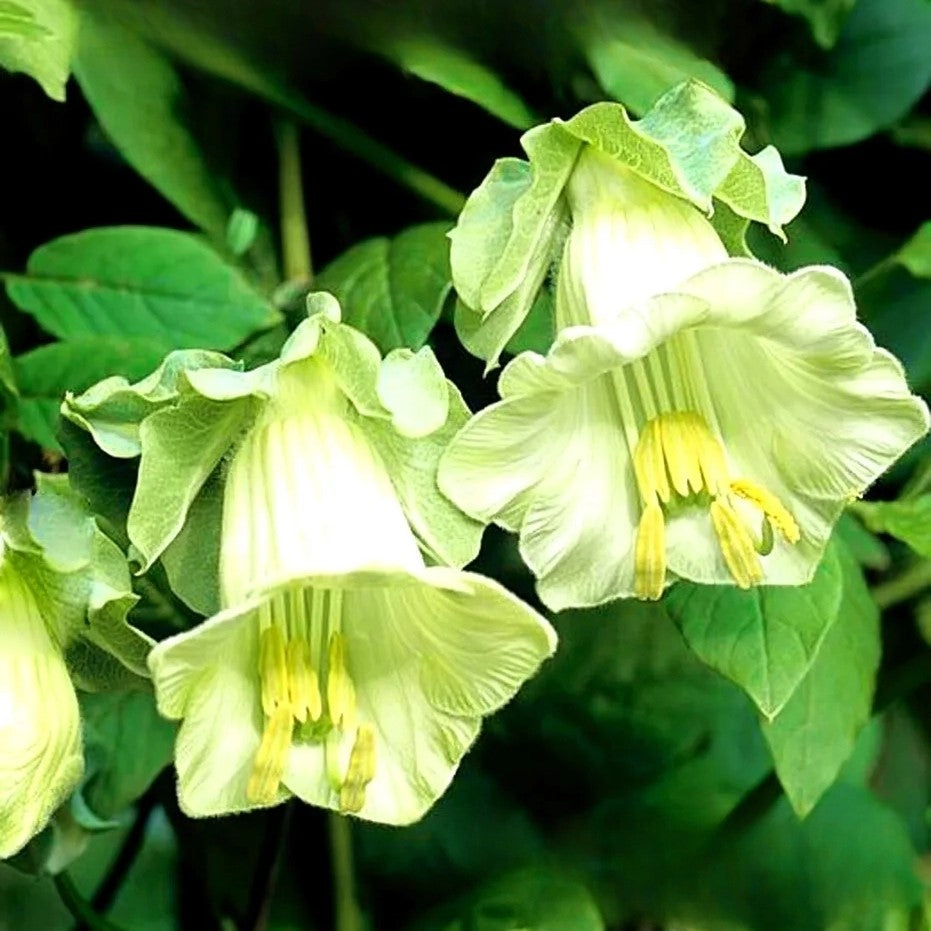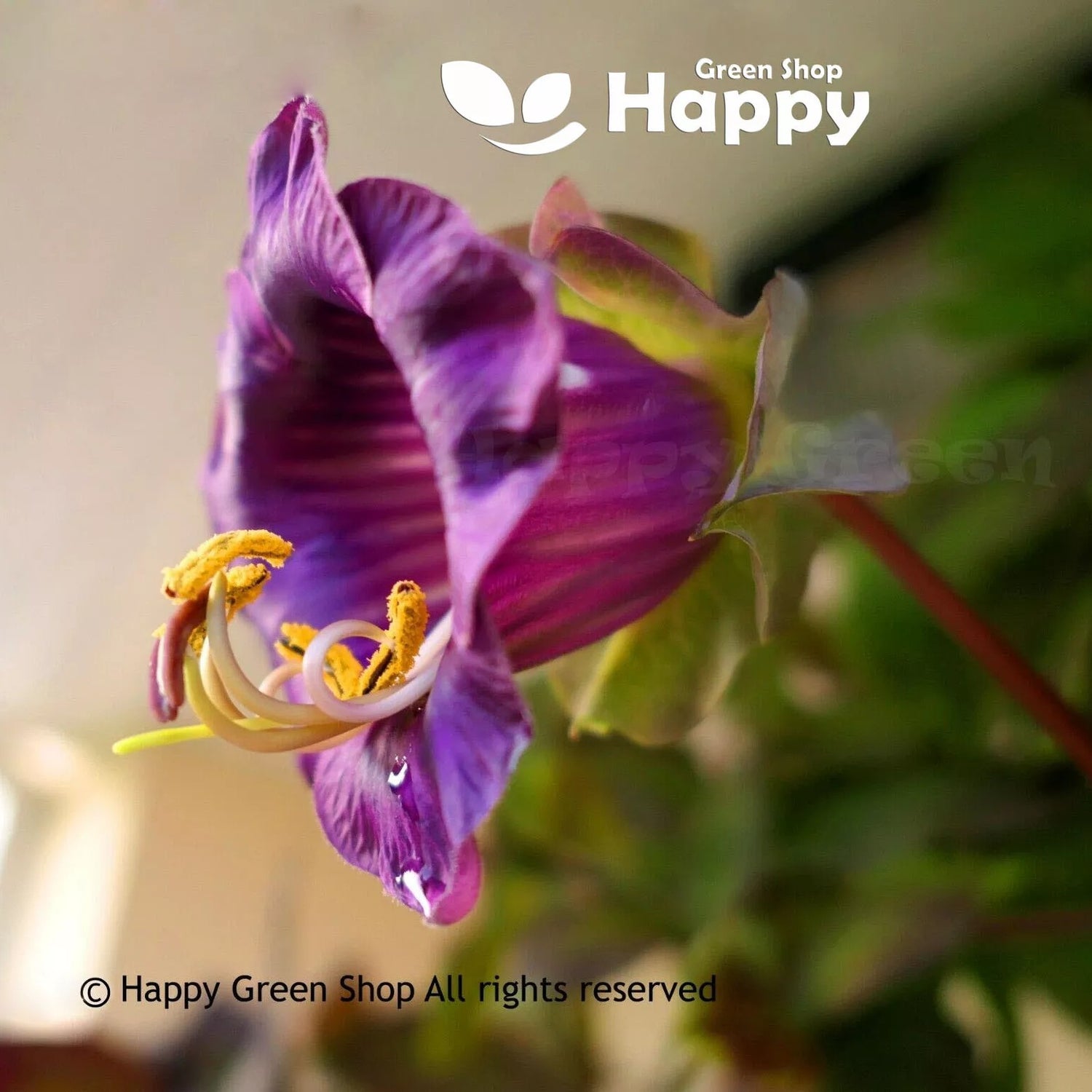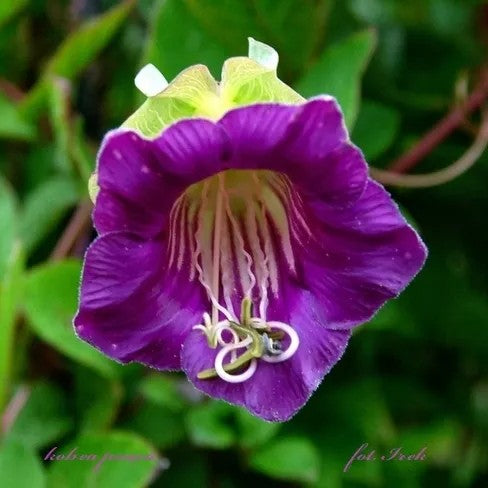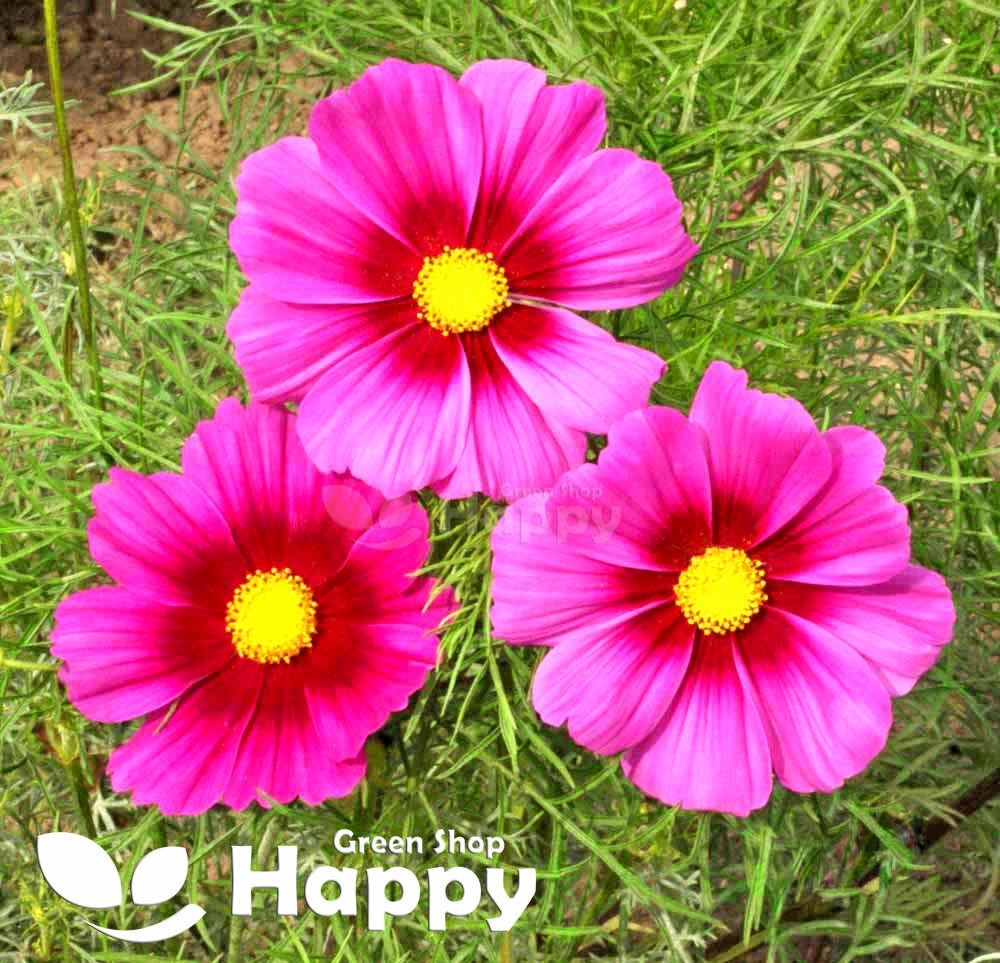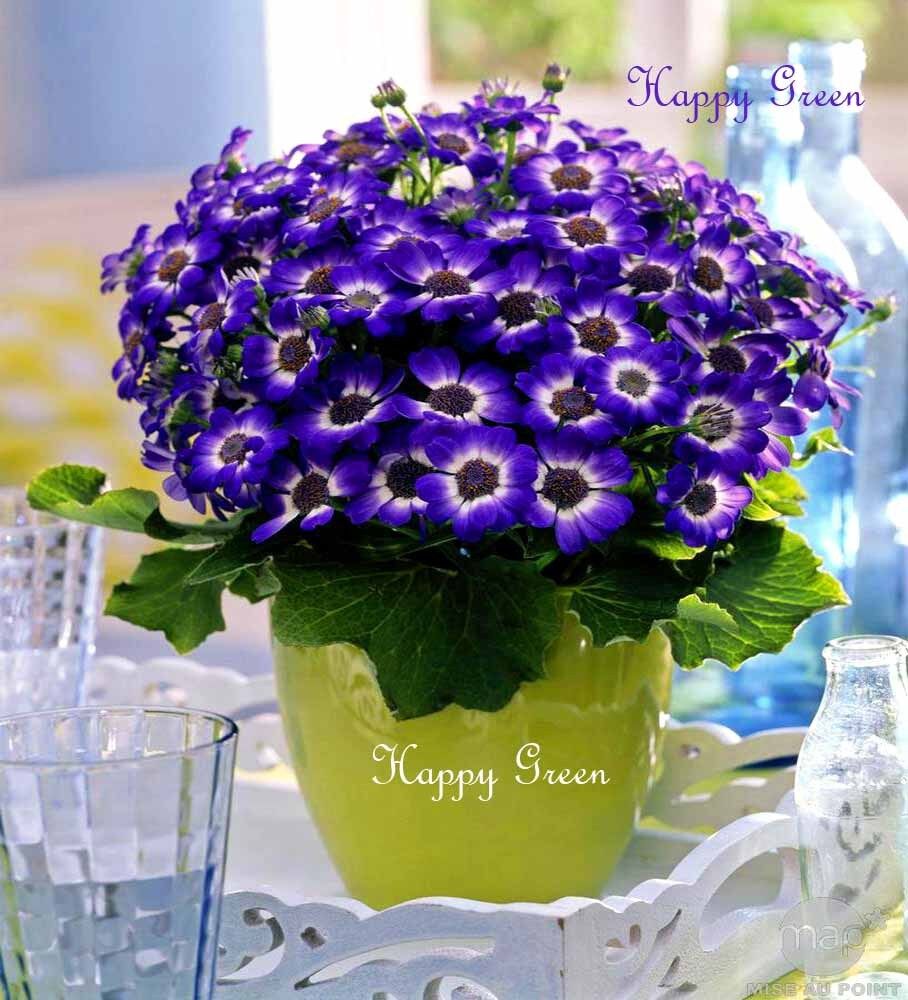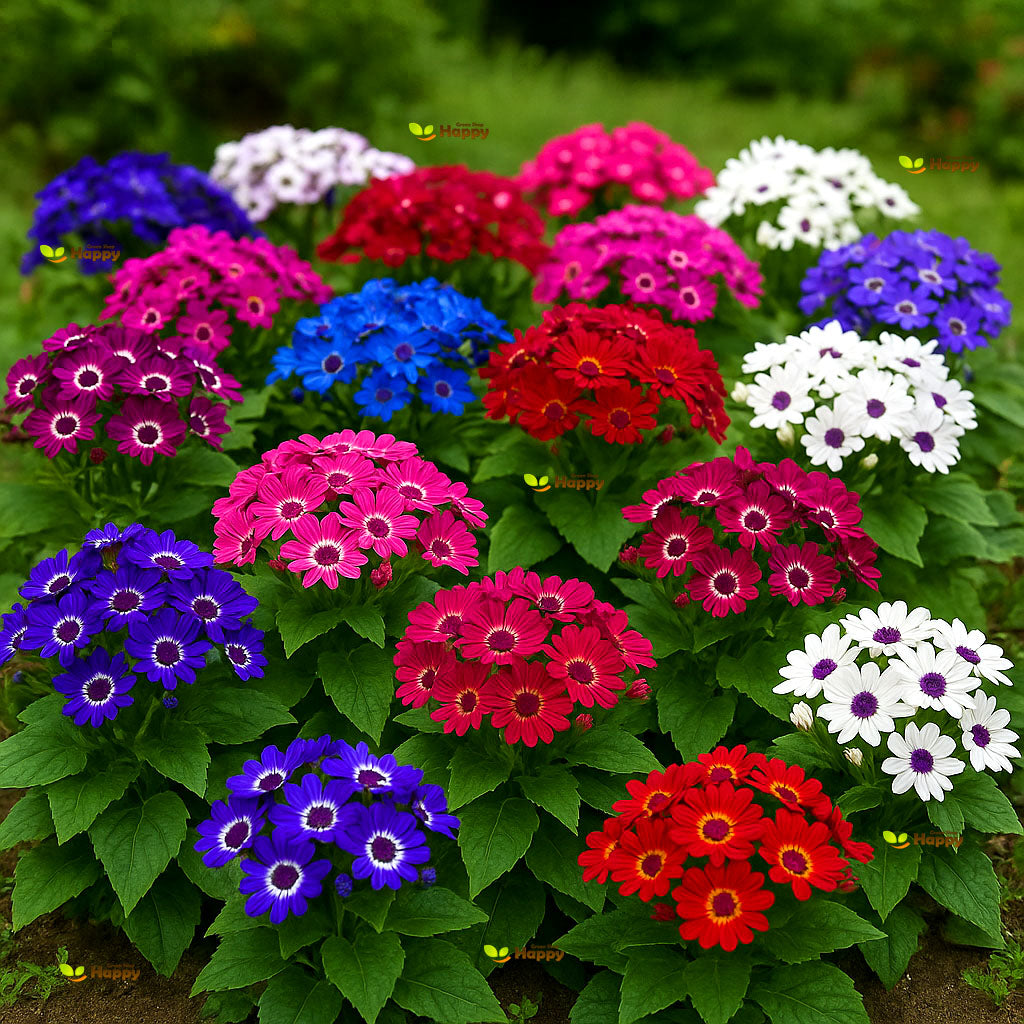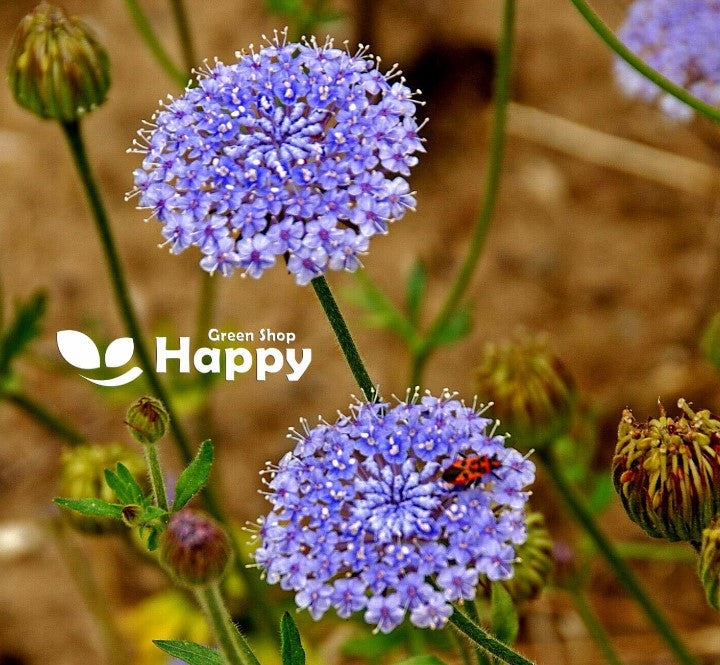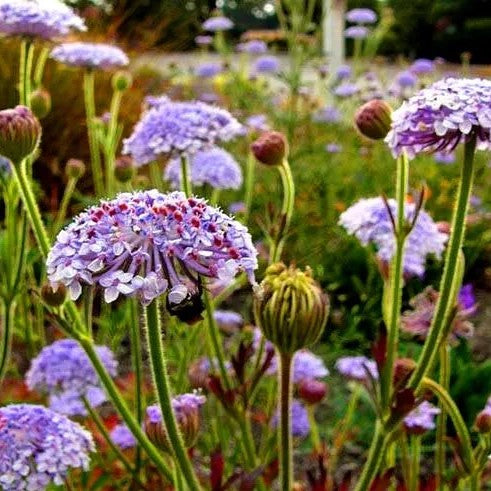Sort by:
59 products
59 products
Dahlia 'Showpiece' Double Mix – 20 Seeds (Dahlia variabilis)
Make your garden the center of attention with the spectacular Dahlia 'Showpiece' Double Mix. Bursting with large, fully double blooms in a dazzling range of bright colors, these dahlias bring a dramatic touch to borders, beds, and cut flower arrangements.
What Makes It Special
-
Striking, fully double blooms in vibrant mixed shades
-
Long flowering season from summer to autumn
-
Ideal for bold displays and cutting
-
Adds height and drama to gardens
Key Features
-
Half-hardy perennial, often grown as an annual
-
Height: 80–100 cm
-
Flower size: 10–15 cm across
-
Thrives in sunny, well-drained soil
-
Excellent cut flowers with long vase life
Ideal For
-
Cut flower gardens
-
Bedding displays and borders
-
Summer floral arrangements
-
Gardeners looking for bold, showy blooms
Sowing
-
Sow indoors 6–8 weeks before last frost at 18–22°C
-
Cover lightly with fine soil, keep moist until germination (7–14 days)
-
Transplant outdoors after frost danger has passed
-
Space plants 30–40 cm apart
-
Deadhead regularly to encourage continuous blooms
Dahlia 'Mignon Coltness' – Seeds
(Dahlia variabilis)
Dahlia 'Mignon Coltness' is a compact, free-flowering variety that produces masses of single blooms in warm shades of scarlet, orange, and yellow with golden centers. Easy to grow from seed, these bushy plants create a bold splash of summer color and are perfect for borders, edging, and containers. Loved by pollinators, they’ll keep your garden lively all season long.
Key Features
-
Type: Half-hardy annual (grown from seed)
-
Height: 40–50 cm
-
Spread: 30–40 cm
-
Flowering: July–October
-
Position: Full sun
-
Soil: Fertile, well-drained
Ideal For
-
Bedding and borders
-
Containers and pots
-
Edging paths and garden beds
-
Pollinator-friendly gardens
Sowing & Growing
-
Sow indoors: February–April at 18–22°C
-
Germination: 7–14 days
-
Transplant after frost, spacing 25–30 cm
-
Deadhead regularly for continuous flowering
Dahlia ‘Cactus’ Hybrids Mixed – Spiky, Dramatic & Bursting with Color
Dahlia ‘Cactus’ Hybrids Mixed brings an explosion of exotic, spiky-petaled blooms in a dazzling mix of colors. Their starburst-shaped flowers add drama, height, and texture to any summer display. Flowering from mid-summer until the first frost, they’re perfect for creating bold borders, stunning cut flower arrangements, and show-stopping garden focal points.
What Makes It Special
-
Exotic, spiky “cactus” blooms for dramatic impact
-
Rich mix of vibrant colors
-
Long flowering period for continuous beauty
-
Perfect for cutting and floral design
-
Adds height and texture to garden beds
Key Features
-
Height: 90–120 cm – tall, strong stems
-
Half-hardy annual – blooms first season
-
Large, starburst-shaped flowers
-
Excellent vase life
-
Attracts pollinators
Ideal For
-
Tall borders and garden backdrops
-
Cutting gardens and bouquets
-
Adding exotic flair to displays
-
Late-summer garden interest
Sowing
-
Sow indoors 6–8 weeks before last frost
-
Lightly cover with fine compost
-
Germination: 7–14 days at 18–21°C
-
Transplant after frost danger has passed, spacing 40–50 cm apart
-
Prefers full sun and rich, well-drained soil
Dahlia 'Bloody Mary' – Seeds
(Dahlia variabilis)
Dahlia 'Bloody Mary' is a stunning compact variety that produces vibrant, dark red, fully double blooms with a rich, velvety texture. Its bushy habit and long flowering season make it ideal for borders, containers, and mixed flower beds. This eye-catching variety is also a favorite for cut flowers, adding dramatic color to bouquets and arrangements.
Key Features
-
Type: Half-hardy annual (grown from seed)
-
Height: 40–50 cm
-
Spread: 30–40 cm
-
Flowering: July–October
-
Position: Full sun
-
Soil: Fertile, well-drained
Ideal For
-
Borders and bedding displays
-
Containers and pots
-
Cut flower arrangements
-
Pollinator-friendly gardens
Sowing & Growing
-
Sow indoors: February–April at 18–22°C
-
Germination: 7–14 days
-
Transplant after last frost, spacing 25–30 cm
-
Deadhead regularly to encourage continuous blooms
Cup and Saucer White – 15 Seeds (Cobaea scandens)
The Cup and Saucer Vine (White) is a fast-growing climber with elegant, bell-shaped blooms resembling little teacups. Its trailing vines quickly cover fences, arches, and trellises, creating a stunning vertical display. A perfect choice for adding a touch of elegance and charm to summer gardens.
What Makes It Special
-
Unique cup-and-saucer shaped blooms
-
Rapid-growing climbing vine
-
Long-lasting flowers from summer to frost
-
Adds instant charm to vertical garden spaces
Key Features
-
Half-hardy perennial, often grown as an annual
-
Height: up to 3–6 m
-
Large white, bell-shaped flowers
-
Prefers full sun to partial shade
-
Attracts bees and pollinators
Ideal For
-
Fences, walls, arches, pergolas, and trellises
-
Cottage gardens and romantic garden themes
-
Vertical displays and privacy screens
-
Cut flowers for unique arrangements
Sowing
-
Sow indoors 8–10 weeks before the last frost
-
Pre-soak seeds for 12–24 hours before sowing
-
Place seeds on their side, just under the surface of soil
-
Germination: 20–30 days at 18–20°C
-
Harden off and transplant outdoors after frost, spacing 30–45 cm apart
Cup and Saucer Purple – 14 Seeds (Cobaea scandens)
The Cup and Saucer Vine (Purple) is a vigorous climber producing dramatic, bell-shaped flowers that open green and mature into rich purple. Its fast-growing vines bring vertical beauty to arches, trellises, and fences, making it a standout centerpiece in any summer garden.
What Makes It Special
-
Exotic cup-and-saucer style blooms
-
Flowers shift from green to deep purple as they mature
-
Rapid-growing vine for quick coverage
-
Long flowering season, summer to frost
Key Features
-
Half-hardy perennial, usually grown as an annual
-
Height: 3–6 m
-
Stunning purple, bell-shaped blooms
-
Prefers full sun to partial shade
-
Attracts bees and pollinators
Ideal For
-
Arches, pergolas, trellises, and fences
-
Cottage and ornamental gardens
-
Vertical displays and natural privacy screens
-
Unique cut flowers
Sowing
-
Sow indoors 8–10 weeks before the last frost
-
Pre-soak seeds 12–24 hours before sowing
-
Plant seeds on their side, just under the surface
-
Germination: 20–30 days at 18–20°C
-
Transplant outdoors after frost, spacing 30–45 cm apart
Cosmos 'Radiance' – Seeds
(Cosmos bipinnatus)
Cosmos 'Radiance' is a charming variety that produces large, daisy-like blooms in deep carmine-pink with a lighter halo around the golden-yellow centers. The graceful, feathery foliage and long, slender stems make it a superb choice for garden displays and cut flowers. Easy to grow and long-flowering, it’s a true summer favourite.
Key Features
-
Type: Half-hardy annual
-
Height: 90–120 cm
-
Spread: 40–50 cm
-
Flowering: June–October
-
Position: Full sun
-
Soil: Well-drained, moderately fertile
Ideal For
-
Cottage gardens
-
Wildlife and pollinator-friendly planting
-
Borders and background planting
-
Cut flower arrangements
Sowing & Growing
-
Sow indoors: March–April at 18–21°C
-
Sow outdoors: May–June directly in final position
-
Germination: 7–10 days
-
Thin/transplant to 30–40 cm spacing
-
Deadhead regularly for prolonged flowering
Cineraria hybrida dwarf mix `Amigo Strain` - 10 seeds (Senecio hybridus nana)
£1.75
Unit price perCineraria hybrida dwarf mix `Amigo Strain` - 10 seeds (Senecio hybridus nana)
£1.75
Unit price perCineraria Hybrida Dwarf Mix ‘Amigo Strain’ – Seeds (Senecio hybridus nana)
Cineraria Hybrida Dwarf Mix ‘Amigo Strain’ produces a stunning display of bright, daisy-like flowers in shades of purple, blue, pink, and white. Compact and low-growing, it is ideal for pots, borders, and window boxes. This easy-to-grow annual blooms early in spring, adding vibrant color to indoor and outdoor displays.
Why Grow "Amigo Strain"
-
Compact, dwarf habit for small spaces
-
Bright, multicolored daisy-like blooms
-
Long-lasting and early flowering
-
Ideal for containers, borders, and window boxes
Key Features
-
Type: Half-hardy annual (Senecio hybridus nana)
-
Height: 15–25 cm
-
Flowering: Early spring
-
Position: Partial shade to bright indirect light
-
Uses: Containers, window boxes, borders, indoor displays
Ideal For
-
Patio and balcony containers
-
Indoor bright spots
-
Early spring color in gardens
-
Borders and small-scale plantings
Sowing & Growing
-
Sow indoors: January–March in seed trays
-
Germination: 14–21 days at 18–20°C
-
Transplant seedlings into pots when large enough
-
Keep soil moist, avoid direct harsh sunlight
-
Deadhead to prolong flowering
Blue Lace Flower Seeds (Didiscus caeruleus / Trachymene caerulea)
The Blue Lace Flower is an elegant and delicate annual, much loved for its airy umbels of soft sky-blue blossoms. Each flower head resembles lacework, carried on long slender stems, making it ideal for cutting. With its light, lacy texture, this plant brings charm and movement to borders, cottage gardens, and wildflower-style plantings. It is also a superb choice for floral arrangements, both fresh and dried.
What Makes It Special
-
Produces lace-like umbels of pastel blue blooms
-
Excellent cut flower with a long vase life
-
Attractive to bees, butterflies, and pollinators
-
Adds a soft, romantic touch to borders and bouquets
Key Features
-
Botanical name: Didiscus caeruleus / Trachymene caerulea
-
Common name: Blue Lace Flower
-
Seed count: Approx. seeds per pack
-
Height/Spread: 45–60 cm tall, 20–30 cm spread
-
Position: Full sun, well-drained soil
-
Flowering period: Summer to early autumn
-
Lifespan: Half-hardy annual
Ideal For
-
Cottage gardens
-
Wildflower meadows
-
Borders and mixed beds
-
Cut flower and dried arrangements
-
Pollinator-friendly gardens
Sowing Instructions
-
When to sow: March–May indoors, or April–June outdoors after frost has passed
-
How to sow:
-
Sow seeds thinly in trays with seed compost or directly outdoors in fine soil
-
Lightly cover seeds with a thin layer of soil or vermiculite
-
Keep moist until seedlings appear (14–21 days)
-
-
Transplant/Thin: Space plants 20–30 cm apart
-
Care: Deadhead to prolong flowering; provide support in windy sites
Showing 54/59




